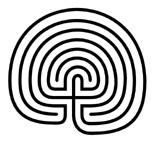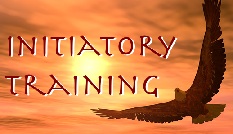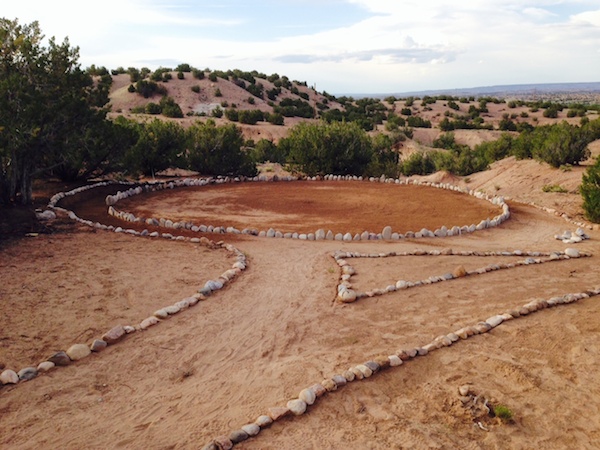 Letter from the President – June 2014
Letter from the President – June 2014
by Paul Robear
At Cuyamungue Institute we have been busy preparing and expanding the facilities for our upcoming Solstice Celebration and Centennial Conference. This actually began last year, with completion of the Hall of the Thunderbirds. Inspired by the traditional Navajo hogan, this new building serves as a lecture hall and gathering place for dance, celebration, rituals, and other events.
We now look forward to completion of a Labyrinth. Julie Nichol, a ritual posture instructor in England, volunteered to arrive at CI a week before the Centennial help design and build a traditional labyrinth and the Board of Directors was delighted at the proposal. During last year’s board meeting, we walked the land to select a site for the labyrinth. We all agreed that it should be adjacent to the Dance Court, to be utilized also for the annual Masked Trance Dance. A long-standing tradition at the Institute, the design of the masks, costumes, and dance steps are drawn from our group visionary experiences, weaving a mythic dance in celebration of the Web of Life. How fitting, then, to expand the area of the Dance court and compliment it with the powerful presence of our labyrinth.
Anyone familiar with the landscape here at CI will tell you that a flat area of land is hard to find. The area we selected for the Labyrinth had a significant slope, with large channels of erosion. I reached out to a few locals, Lynn Brewer, Leo Fields, and Jason Lopez, to help prep the site. Knowing that the success of the Labyrinth depends upon a strong and proper foundation, we moved and carved the soil to create a new “plaza like” space, finally watering it to harden the earth into an adobe-type surface. The photo above shows the site in progress after about a month of work, with installation of the first outer rings of rock. At 36 feet in diameter, with another four-foot path encircling it, we have the beginning of yet another strong presence on the land. While my team was at it, I was also inspired to line all pathways with rocks and expand and clean up the Dance Court. I found the blue egg, an feature from a Masked Trance Dance many years ago, that had blown down an arroyo, so I repaired it and reset it into its long-standing place, raked the pathways and lined them with rocks, and set a new pole in place. My wife Laura points out that this new pole is the perfect compliment to the egg, and with this, we have potent symbols of birth, male and female, adjacent to the memorial of Felicitas beyond. Our goal is to have everything finished in place for the Centennial Conference. In the next newsletter, I will share an update on the completed labyrinth and peoples experiences.
I look forward to sharing the stories, and activities of the Centennial Conference in our next newsletter issue. These are very exciting times and there is no better way to honor our founder, Dr. Goodman, then having this large community gather of the Cuyamungue Institute. Please take moment to visit our newest articles and submissions listed below.
Blessings,
Paul Robear
President / Executive Director
We are happy to share the following news and articles.
In this issue:
- Book: Pueblo Spirit: In the Life of Felicitas D. Goodman by Susan Josephson
- Article: Exploring Human Consciousness: An Overview by David Brains
- Article: Archeological Discoveries in Peru by Hortense Soulier
- Article: Labyrinths: An Introduction
- Workshop: Initiatory Training – July 23-27, 2014
- How to Submit an Article: you are invited and encouraged to participate
SCROLL DOWN for Articles and Links
![]()
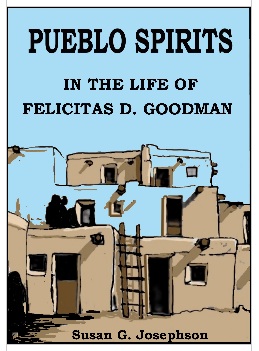 Pueblo Spirit: In the Life of Felicitas D. Goodman by Susan Josephson
Pueblo Spirit: In the Life of Felicitas D. Goodman by Susan Josephson
PUEBLO SPIRITS is a true story (in graphic novel form) about Felicitas D. Goodman’s spirit encounters and exploration of Native American religion in the Southwest. This book tells the story of Dr. Goodman’s quest for contact with ancient Pueblo Indian spirits in New Mexico and how that quest nearly cost her life. It chronicles her exploration of Cuyamungue and her discovery of her own true spirit name. The author, Susan Josephson, is Dr. Goodman’s daughter and this version was authorized by Dr. Goodman before her death.
Susan will be giving a talk on Dr. Goodman’s Buffalo Wisdom at the centennial celebration being held at the Cuyamungue Institute. Susan Josephson’s talk on the Buffalo Wisdom explains how anthropologist Dr. Goodman came to think of herself as a buffalo spirit and what it meant for her to be a buffalo spirit. It tells the Lakota myth of White Buffalo Calf Woman and explains in what sense the ritual trance postures that Dr. Goodman discovered were seeds of buffalo wisdom; ancient ways of accessing the spirit world for people to use in this new age foretold by the Lakota myth. More ->
![]()
 Exploring Human Consciousness: An Overview by David Brains
Exploring Human Consciousness: An Overview by David Brains
Consciousness is one of the most important aspects of being human. It allows for the subjective experience called life. Yet where does consciousness come from? Answering this question has known a long history ranging from ancient times to the technological present. Where do we stand now? This article provides an overview of contemporary consciousness research. More->
![]()
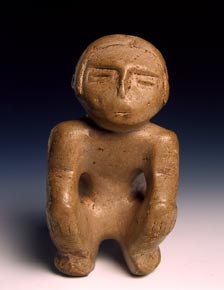 Archeological Discoveries in Peru by Hortense Soulier
Archeological Discoveries in Peru by Hortense Soulier
One of the most beautiful countries in South America, boasting a unique and heavy history, Peru is home to myriad fascinating archeological sites which help us understand earlier civilizations, form the Incas in the 15th century to cultures thousands of years ago. Every year, Peru sees new archeological discoveries which shed light on these cultures and help solve decade-long mysteries on how the ancient people lived. History and archeology buffs will find their dream come true as they explore Peru and its countless sites. Recent discoveries are already bringing new insights into Peru’s history. More->
A labyrinth is an ancient symbol that relates to wholeness. It combines the imagery of the circle and the spiral into a meandering but purposeful path. The Labyrinth represents a journey to our own center and back again out into the world. Labyrinths have long been used for meditation and prayer, a tool for an inward journey and self-reflection.
Mazes and a range of labyrinth designs are found all around the world in many cultures and civilizations. They are found carved in rock, ceramics, clay tablets, mosaics, manuscripts, stone patterns, turf, hedges, and cathedral pavements. The earliest known designs are about 3000 years old. The significance of them for the various cultures they were part of and the story of how they developed from one place to another (or simultaneously appeared in several) is often mysterious and hard to fathom. The most ancient and widespread design looks complicated but can be drawn quite easily if you know the method. More->
![]()
Initiatory Training:
July 23rd – 27th, 23014
Explore, experience, and expand consciousness through the Cuyamungue Method. This is the revival of an ancient practice of consciousness expanding, spirit journey experiences using sacred postures, derived from ancient artwork the world over. This expanded state of consciousness is achieved through a relatively simple, safe, and teachable method with over thirty years of verified safe use; the evidence points to over thirty-thousand years of use.
Enjoy the Benefits. This powerful technique is actually an in-built capacity of our physiology, which naturally and easily responds to a simple alternate-state induction. As tested in the lab, the physiological shift that supports this visionary experience includes a decrease in stress hormones, an increase in the well-being endorphins as well as a dramatic increase in the DC voltage of brain activity. It’s the simultaneous theta brain waves whilst still in beta that gives rise to this conscious “waking dream” visionary experience. Each posture has its own range of experiences. This workshop will cover healing, divination, spirit journeying, and more. In small group sessions, we will learn and practice the Cuyamungue Method, journal our experiences, then share with the group.
Participants will learn how to continue their home practice, with the tools needed. You will learn to DO THIS PROCESS AT HOME, step by step, with guidance using succession of shamanic postures which also includes healing, divination, metamorphosis, and initiation. Continue to for full description
![]()
![]() How to Submit an Article: As part of expanding our Cuyamungue Institute community, you are invited and encouraged to participate. Share how you use the Cuyamungue Method in your chosen field. We are also open to other topics, with the emphasis on the posture work, and research and or experience. More information
How to Submit an Article: As part of expanding our Cuyamungue Institute community, you are invited and encouraged to participate. Share how you use the Cuyamungue Method in your chosen field. We are also open to other topics, with the emphasis on the posture work, and research and or experience. More information
![]()
We need your support! The Cuyamungue Institute is an independent 501(c)(3) not-for-profit organization. Like most non-profit organizations, CI has limited resources. Each one of us can make a difference in our own way; some have the resources to provide financial support, while others have talents which they can share as a committed volunteers. We must always ask the question, “How can I make a difference?” Once we know that answer, we need to act. We are proud of the scope of work we have already accomplished, but this is just the beginning, and there is much more to do! Here’s how you can participate:
- Be a Volunteer. Ask about existing, on-going projects you can help with. Or suggest projects that you can work on, fund, or both!
- Attend workshops at the Institute. Bless yourself and CI. Workshop fees directly support maintenance of the land and buildings.
- Personal Donations. 100% of your donations and gifts go directly to the Institute, and are tax deductible.
- Corporate Donations. Your company can have a tremendous impact. Ask us how we can bring our work to your visionaries and leaders!
Also consider making a donation by clicking here. Ongoing research and new applications of this work is only possible with donations made by people like you. Laura Lee, our Director of Outreach and Development, is available to answer your questions. Contact her at lauralee@cuyamungueinstitute.com ![]() Thanks for reading! Please forward this to your friends and acquaintances who will enjoy learning more about us, and please let me hear from you! I am most happy answer any and all questions about the Institute or the Cuyamungue Method. We welcome all correspondence.
Thanks for reading! Please forward this to your friends and acquaintances who will enjoy learning more about us, and please let me hear from you! I am most happy answer any and all questions about the Institute or the Cuyamungue Method. We welcome all correspondence.
Email me directly at paulrobear@cuyamungueinstitute.com . 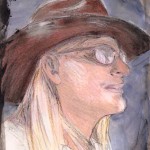
Blessings,
Paul Robear
President / Executive Director
Cuyamungue – The Felicitas D. Goodman Institute
Facebook | LinkedIn | Twitter

